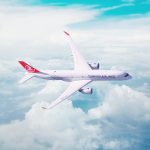Regular watchers and visitors to North Korea will known that quite literally since the Korean War unifying the country has been a key tenet. Recently though that has all changed as the DPRK says no to reunification.
Why though have the country done this, what does it mean gong forward and what affect will it have on tourists?
A history of reunification on the Korean Peninsula
Despite the odd periods of different states existing on the Korean peninsula, for the most part Korea has been one homogenous state, leading right up to Joseon.
Joseon was the last state that ruled the Korean Peninsula under its own royal family until the Japanese slowly started to stake control at the end of the 19th century.
Yet while this led to a brutal colonial regime the state remained as one, even if that was as a Japanese colony. And despite what many people think a unified state existed even after the war when the People’s Republic of Korea was proclaimed.
Sadly this last unified state did not last as the Russians took influence in the North and the Americans in the South.
Attempts at Reunification
After the Democratic Republic of Korea and the Republic of Korea were formed there were a number of times reunification as attempted. Most famous of course for this was the Korean War, which of course ended in a stalemate, or some would argue DPRK victory.
Since then there have been numerous military conflicts, as well as more famous times of peace where both sides put their own views about how they might reunify forward.
The Confederal Republic of Koryo
From the side of the DPRKm reunification would involve both sides entering into a federal/confederal state. Said state would allow both sides to keep their political institutions, but there would be a central government representing the neutral state.
You can read about the Confederal Republic of Koryo here.
And while this idea never got much traction south of the border, there were still similar offerings, with many feeling some kind of federal state would have to come before any full reunification. This included various ideas, such as an EU style Customs union.
Whatever the policies, or politics of the time reunification was up until recently extremely key to the very existence of the DPRK. This though has changed as the country now says no to reunification.
DPRK says no to reunification
A few months ago one of the key monuments to reunification was essentially blown up by the government of the DPRK in a move that clearly signaled the new policy of saying no to reunification.
You can read about that here.
Official reasonings were many, but chief among them was that Marshall Kim Jong Un believed that due to the attitude of the south reunification was for all intents impossible in the current climate.
With this in mind the country would be better served by building itself up independently, without needed to look south.
Why have they done this?
Like anything as big as this there is no one reason, but in fact many. At its core though it has some similarities with both Germany’s in the 1970’s, where it was felt recognition and moving forward were better than chasing an impossible dream
And there is also the fact that reunification itself does not always work, with examples such as Moldova and Romania, as well as war torn Yemen being proof of this.
Add this to the fact that North Koreans, as well as Chinese-Koreans in the south are often treated very badly then the reasoning not to assimilate has some merit.
North Korea says no to reunification – What will it mean for tourism?
North Korea saying no to reunification will likely have little affect on tourism, although there will be some subtle ones. The DPRK now no longer calls South Korea “southern Korea”, but has started to refer to it as the Republic of Korea.
This will be something DPRK tour guides will undoubtedly put across when tours resume. It might also mean streets such as Tongil (which means reunification), as well as other sites and places being renamed.
What though the Koreans say about all this and indeed what the party line is, is yet to be seen.
Click the link to see our North Korean Tours.





